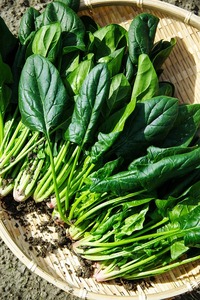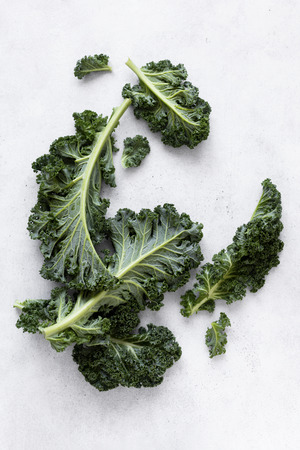Detox soups have gained popularity as an effective way to flush out toxins while nourishing the body. These soups are made from nutrient-dense vegetables and leafy greens that provide essential vitamins, minerals, and antioxidants to support the body’s natural detoxification process.
Spinach and kale, two of the most popular superfoods, are packed with cleansing properties that make them ideal for detox soup recipes. Spinach is a powerhouse of antioxidants and vitamins, while kale is renowned for its high fiber and immune-boosting minerals. Together, these two greens help detoxify the body by supporting liver function, aiding digestion, and boosting metabolism.
Why Spinach and Kale Are Superfoods

Spinach and kale are nutrient powerhouses that offer numerous health benefits, making them ideal ingredients for detox soups. Both greens are low in calories and high in essential nutrients that help the body eliminate toxins and maintain overall health.
Nutritional Breakdown of Spinach
Spinach is an excellent source of vitamins, particularly Vitamins A, C, and K. These vitamins play a vital role in immune function, vision, skin health, and bone strength.
- Vitamin A: Supports eye health and enhances immune function.
- Vitamin C: Boosts immunity and promotes collagen production, essential for skin health.
- Vitamin K: Crucial for blood clotting and bone health.
Spinach is also packed with antioxidants like lutein and beta-carotene, which help neutralize free radicals, reduce oxidative stress, and support the detoxification process by improving liver function.
Nutritional Breakdown of Kale
Kale is highly regarded for its fiber content, which aids digestion by promoting regular bowel movements and eliminating toxins from the body. It is also a rich source of vitamins and minerals that support immune health, such as Vitamin C and calcium. Kale’s high fiber content helps keep you full longer, aiding in weight management during detox programs.
Combined Health Benefits of Spinach and Kale in a Detox Soup
When combined, spinach and kale offer a variety of health benefits:
- Weight loss: Low in calories, yet high in fiber, spinach and kale are great for those looking to shed pounds while staying full longer.
- Improved digestion: The fiber content promotes healthy digestion and waste elimination.
- Anti-inflammatory properties: Both spinach and kale are loaded with antioxidants, helping to reduce inflammation in the body, which is key to overall health.
The Ultimate Spinach and Kale Detox Soup Recipe

Ingredients
To prepare this healthy and delicious detox soup, you’ll need the following ingredients:
- 2 tablespoons olive oil
- 1 medium onion, finely chopped
- 3 cloves garlic, minced
- 4 cups fresh spinach
- 3 cups kale, chopped
- 2 medium carrots, diced
- 2 celery stalks, sliced
- 6 cups vegetable or chicken broth
- Salt, pepper, and herbs like thyme or oregano to taste
These simple ingredients form the base of a nutrient-packed soup that will help detoxify your body while providing essential vitamins and minerals.
Step-by-Step Instructions
- Prepare the Vegetables:
Begin by thoroughly washing and chopping the spinach, kale, carrots, and celery. Set the greens aside while preparing the base of the soup. - Sauté the Aromatics:
Heat the olive oil in a large pot over medium heat. Add the chopped onion and garlic, and sauté for about 3-5 minutes until they turn soft and translucent. - Cook the Vegetables:
Stir in the diced carrots and celery. Cook for another 5 minutes to allow the vegetables to soften. - Add Greens and Broth:
Once the vegetables are tender, add the spinach and kale to the pot, letting them wilt slightly. Pour in the vegetable or chicken broth and stir everything together. Bring the soup to a boil, then reduce the heat and let it simmer for 20-25 minutes. - Optional Blending:
If you prefer a smooth soup, use an immersion blender to puree it. Alternatively, transfer the soup in batches to a blender and process until smooth. You can also leave it chunky for more texture. - Serve:
Taste the soup, adjusting the seasoning with salt and pepper as needed. Serve hot, garnished with fresh herbs like parsley or cilantro for added flavor.
Nutrition Information
Each serving of spinach and kale detox soup offers a perfect balance of nutrients:
- Calories: Approximately 90 kcal
- Protein: 3g
- Fat: 4g (from olive oil)
- Carbohydrates: 11g
- Fiber: 3g
This soup is rich in Vitamins A and C, with each serving providing more than half of the recommended daily intake. The fiber content aids digestion and keeps you feeling full, while the antioxidants from the spinach and kale help reduce inflammation and support the body’s detoxification process.
Variations and Additions to Detox Soup
Adding Protein
To make the detox soup more filling, you can easily add protein. For a vegan option, try adding chickpeas, lentils, or tofu. These plant-based proteins blend well with the flavor of the greens and boost the nutritional content of the soup. If you prefer non-vegan protein sources, adding shredded chicken or using bone broth instead of vegetable broth will give the soup a richer flavor and make it more satiating.
Different Herbs and Spices
Herbs and spices can elevate your detox soup by adding both flavor and health benefits. Turmeric and ginger are excellent choices due to their potent anti-inflammatory properties, which enhance the detoxification process. Adding garlic not only boosts flavor but also provides antibacterial and antiviral benefits. For a refreshing finish, toss in some fresh parsley or cilantro, which both offer detoxifying qualities and extra nutrients.
Substitutes for Kale and Spinach
If you don’t have spinach or kale on hand, there are plenty of substitutes that will provide similar detox benefits. Swiss chard, arugula, or bok choy are all excellent alternatives, offering a comparable nutrient profile. Swiss chard, for example, is rich in vitamins A and K, while arugula has a peppery taste that complements soups. Bok choy adds a mild flavor and crunch, perfect for creating a well-rounded detox soup.
Making the Soup Keto or Vegan-Friendly
To adapt this soup for a keto diet, omit the carrots and reduce the onion content to lower the carbohydrate count. For a vegan version, stick with vegetable broth and add plant-based proteins like chickpeas or lentils. The beauty of this detox soup is its versatility; it can be tailored to suit a wide range of dietary needs, making it easy to incorporate into any healthy eating plan.
Health Impact and Detox Benefits of Spinach and Kale Detox Soup
How Detox Soups Cleanse Your System
Detox soups work by providing your body with nutrient-dense ingredients that support its natural detoxification processes. Spinach and kale, in particular, contain properties that enhance the liver and kidneys’ ability to flush out toxins. When consumed regularly, these soups not only cleanse the body but also improve overall health.
Role of Leafy Greens in Detox
Leafy greens like spinach and kale are packed with chlorophyll, a powerful compound that helps detoxify the liver by binding to toxins and eliminating them from the body. They also support kidney health, promoting the elimination of waste through urine. Both spinach and kale are rich in antioxidants like lutein and beta-carotene, which neutralize harmful free radicals and help eliminate toxins.
The high fiber content in these greens also plays a significant role in detoxification. Fiber binds to waste products and helps move them out of the digestive tract, improving gut health and overall digestion. This process supports the liver and kidneys, the body’s primary detox organs, in functioning more efficiently.
Benefits of Including Soup in Your Detox Diet
- Boosting Metabolism: The vitamins and minerals found in spinach and kale support metabolic processes, ensuring that the body efficiently converts food into energy while eliminating waste.
- Aiding Digestion and Gut Health: The fiber in detox soups helps maintain regular bowel movements, which is crucial for removing waste products from the body. It also promotes the growth of beneficial gut bacteria.
- Increasing Hydration: Soups are an excellent way to stay hydrated. The broth adds to your daily fluid intake, which helps the kidneys flush out toxins and keeps your system hydrated.
How Often Should You Eat Detox Soup?
Detox soups, like spinach and kale soup, can be enjoyed regularly, but how often should you consume them? Experts recommend that you incorporate detox soups into your diet two to three times a week for optimal results. If you’re following a short-term detox plan, you can consume it daily for up to a week to kickstart your system.
It’s essential to keep a balanced diet when consuming detox soups regularly. While these soups are nutrient-rich, they may lack the full spectrum of nutrients you need over time, such as protein or healthy fats. Therefore, it’s best to pair detox soups with other meals that include a variety of food groups.
Be mindful not to over-rely on detox soups. A diet that is overly focused on detoxing can lead to nutrient deficiencies and negatively impact your health. A balanced approach is key for long-term wellness.
Frequently Asked Questions
Is spinach and kale detox soup good for weight loss?
Yes, spinach and kale detox soup is an excellent option for weight loss. It is low in calories and high in fiber, which helps keep you full for longer. The soup also supports digestion and boosts metabolism, both of which are essential for weight management.
Can I freeze detox soup for later?
Yes, detox soups can be easily frozen for later use. Simply let the soup cool completely, then transfer it to an airtight container. The soup will keep well in the freezer for up to three months. When you’re ready to enjoy it, thaw the soup in the refrigerator overnight and reheat it on the stove.
What are other vegetables I can add to my detox soup?
In addition to spinach and kale, you can add a variety of other detox-friendly vegetables to your soup. Broccoli, zucchini, carrots, and celery are excellent options that will boost the nutritional profile of your detox soup. These vegetables provide additional fiber, vitamins, and minerals.
Can I replace spinach with another leafy green?
Yes, if spinach isn’t available, you can substitute it with other leafy greens such as Swiss chard, bok choy, or arugula. These greens have similar nutrient profiles and will still offer detoxifying benefits.
How long does it take to see detox results?
Results can vary depending on your body and how often you consume detox soup. Generally, people begin to feel more energetic and notice improved digestion within a few days of adding detox soups to their diet. For more significant results, like weight loss or reduced inflammation, you may need to consume the soup regularly for several weeks.
Tips and Notes Table
| Tip | Note |
|---|---|
| Add a source of protein | To make the detox soup more filling, add lean proteins like chicken or plant-based proteins like chickpeas or lentils. |
| Use fresh, organic ingredients | Fresh, organic vegetables have higher nutrient content and fewer harmful chemicals, which enhances the detox process. |
| Blend for a smoother texture | If you prefer a smooth soup, use an immersion blender or transfer the soup in batches to a regular blender. Leave some texture for heartiness. |
| Season to taste | Herbs like parsley, cilantro, and thyme add flavor and have additional detox properties. Spices like turmeric or cayenne can boost metabolism. |
| Portion control | If you’re using detox soup for weight loss, be mindful of portion sizes. Stick to 1-2 cups per meal. |
| Pair with whole grains or lean protein | While detox soups are great on their own, pairing them with a small serving of whole grains or lean protein can make a more balanced meal. |
| Drink plenty of water | Along with consuming detox soups, remember to drink plenty of water to help the kidneys flush out toxins more effectively. |
| Store properly | Store leftover soup in an airtight container in the refrigerator for up to 4 days, or freeze for up to 3 months. |

